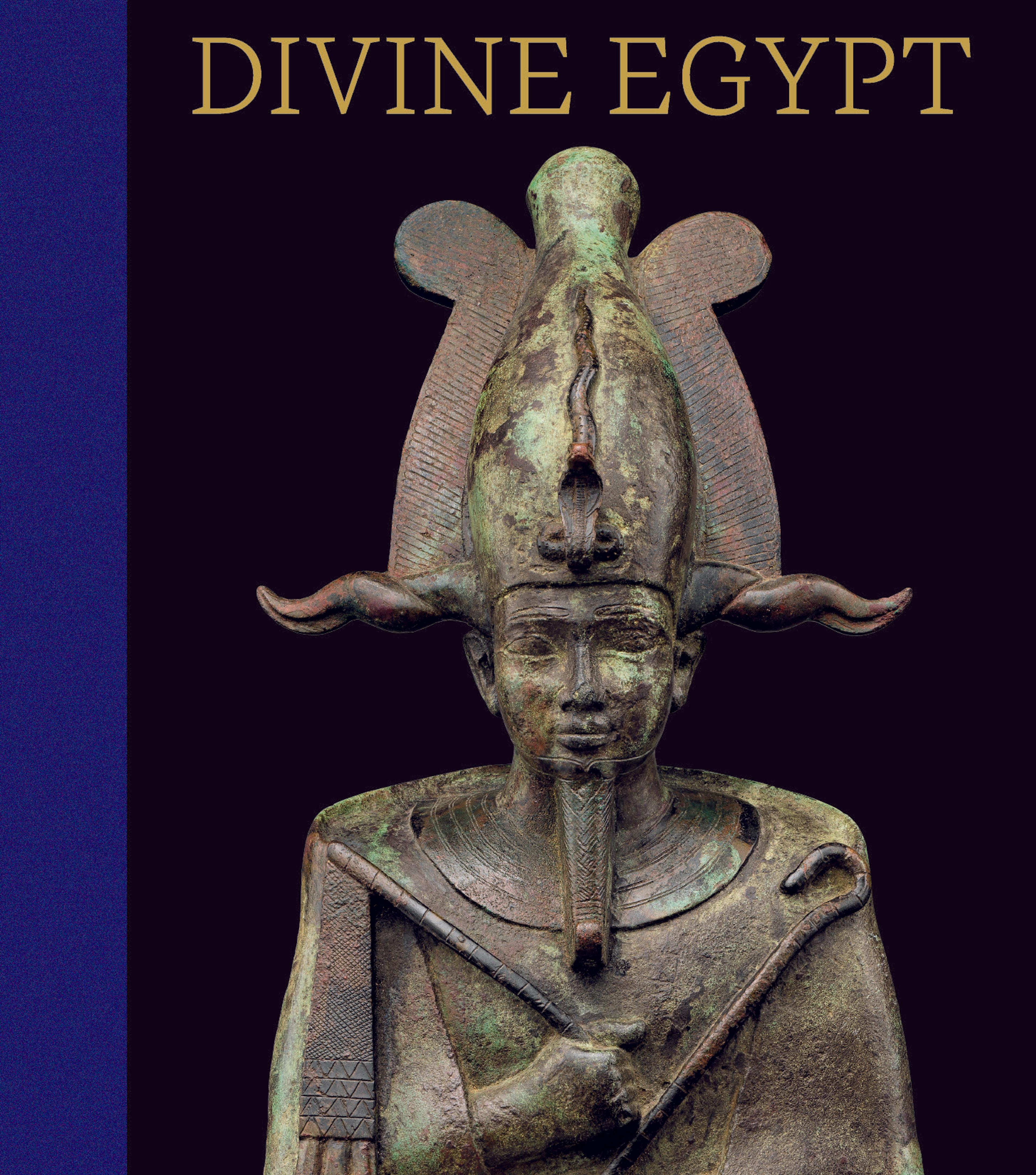Arc sistrum of Tapenu, chantress of Sobek of Khenyt
A sistrum is an ancient Egyptian percussion instrument that was shaken during religious ceremonies and when coming into the presence of a deity. It is thought to have imitated the sound of papyrus stalks being shaken, echoing an ancient rite connected with the myth in which the god Horus was raised in secret in a papyrus marsh. The handle of this sistrum is made in the form of the "Bat emblem" which was associated with the goddess Hathor, who was the patroness of music.
The arc of the sistrum is decorated with a vulture whose spread wings hold extended feathers. On the sides of the arc, just above where the arc fits into the handle, are images of the goddess Meret. The handle of the sistrum names the Chantress of Sobek of Kheny, Tapenu, justified. Kheny is the ancient town of the area of Gebel Silisila, the great sandstone quarry site, in Upper Egypt. Many manifestations of Sobek, the crocodile god, were worshipped in this region.
The sistrum may date from the late Ramesside Period onward to judge from the name.
The arc of the sistrum is decorated with a vulture whose spread wings hold extended feathers. On the sides of the arc, just above where the arc fits into the handle, are images of the goddess Meret. The handle of the sistrum names the Chantress of Sobek of Kheny, Tapenu, justified. Kheny is the ancient town of the area of Gebel Silisila, the great sandstone quarry site, in Upper Egypt. Many manifestations of Sobek, the crocodile god, were worshipped in this region.
The sistrum may date from the late Ramesside Period onward to judge from the name.
Artwork Details
- Title:Arc sistrum of Tapenu, chantress of Sobek of Khenyt
- Period:New Kingdom–Late Period
- Date:ca. 1186–600 BCE
- Geography:From Egypt; Possibly from Southern Upper Egypt, Gebel el-Silsila
- Medium:Cupreous metal
- Dimensions:H. 36.1 × W. 8.4 × D. 5.5 cm (14 3/16 × 3 5/16 × 2 3/16 in.)
- Credit Line:Purchase, Dr. and Mrs. Edmundo Lassalle Gift, 1968
- Object Number:68.44
- Curatorial Department: Egyptian Art
More Artwork
Research Resources
The Met provides unparalleled resources for research and welcomes an international community of students and scholars. The Met's Open Access API is where creators and researchers can connect to the The Met collection. Open Access data and public domain images are available for unrestricted commercial and noncommercial use without permission or fee.
To request images under copyright and other restrictions, please use this Image Request form.
Feedback
We continue to research and examine historical and cultural context for objects in The Met collection. If you have comments or questions about this object record, please contact us using the form below. The Museum looks forward to receiving your comments.
